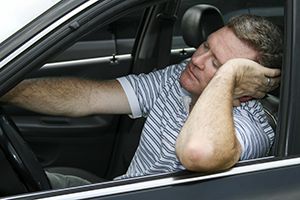 In an effort to reduce the number of fatigue-related fatalities occurring on the roads, the National Sleep Foundation created National Drowsy Driving Prevention Week, Nov. 1-8, 2015, as an annual campaign to bring focus to the importance of not driving while drowsy.
In an effort to reduce the number of fatigue-related fatalities occurring on the roads, the National Sleep Foundation created National Drowsy Driving Prevention Week, Nov. 1-8, 2015, as an annual campaign to bring focus to the importance of not driving while drowsy.
Getting behind the wheel while tired can be as dangerous as driving under the influence. It impairs your judgement and vision and reduces your reaction time, which are all critical for safe driving.
Drowsy driving kills 1,550 people and injures 71,000 every year, according to that National Highway Traffic Safety Administration. It is also most prevalent among young people who often stay up too late, dont get enough sleep and drive at night.
The Foundation has identified some of the most common characteristics of drowsy driving:
- Most drowsy driving accidents happen between midnight and 6 a.m. and in the middle of the afternoon
- A drowsy driver is typically traveling alone and is more likely to be male
- Drowsy driving accidents are also most often single-vehicle accidents
- Drowsy driving accidents involve serious injuries and fatalities
Some of the typical warning signs that drivers should be aware of include:
- Trouble focusing and keeping your eyes open
- Feeling restless, irritable or aggressive
- Daydreaming and wandering thoughts
- Slow reactions to things happening around you
Drivers are encouraged to watch for these signs of fatigue. If you feel that you may be driving drowsy, let a passenger take over the driving. If you are alone, stop driving and find to find a place to rest.
Experts recommend that adults get an average of seven to nine hours of sleep each night and that teens get 8.5 to 9.5 hours each night. This is important for ensuring that you are alert and prepared while behind the wheel.
If you or a loved one has been injured in an accident caused by a drowsy driver, contact our auto accident lawyers today for a free consultation.
<< BACK TO BLOG POSTS